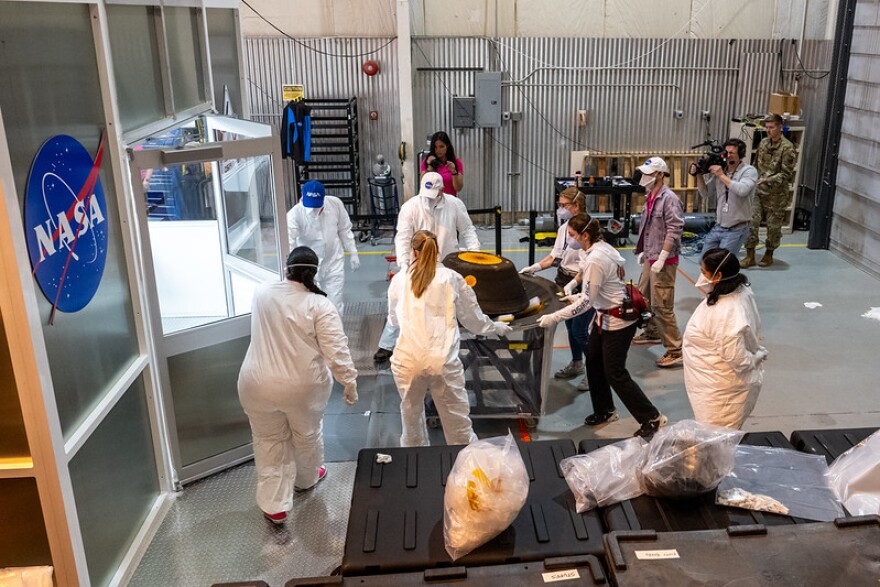On Sept. 24, the spacecraft OSIRIS-REx dropped off a sample of the asteroid Bennu, a near-Earth asteroid that orbits the sun and comes relatively close to Earth.
The sample landed with a parachute in Utah, where scientists successfully recovered the materials, and they are now studying them.
TPR's Jerry Clayton spoke with Vicky Hamilton, a Southwest Research Institute scientist and co-investigator on the OSIRIS-REx mission.
This conversation has been edited for length and clarity.
Clayton: Give us a brief overview of the OSIRIS-REx mission.
Hamilton: OSIRIS-REx is a mission that is designed to collect an asteroid sample and deliver it to Earth. It is NASA's first asteroid sample return mission. And our goal is to obtain a sample from a carbon rich asteroid — and one that we think has been heavily altered by water — in order to understand both the organic history and water history of our solar system and how it might play a role in the Earth we know today.
Clayton: So it's been quite a journey. When did OSIRIS-REx launch?
Hamilton: We launched in September 2016.
Clayton: Now, when the spacecraft made its approach and landing or brief landing on Bennu, everyone was surprised. What happened there?
Hamilton: Yeah, we were expecting Bennu to be a little bit firmer. In fact, the surface was a little bit stronger than we anticipated. Some people have described it as being like a ball pit. You know, if you jump into a pit full of balls, you kind of sink deeper in than you think you might. That was kind of the way it was with Bennu. And so we pressed into the surface a little bit deeper than we expected.
But that has, we think, turned out to be a very good thing because we think it means we got a lot more material from the asteroid than we were hoping to get.

Clayton: Talk about the importance of this particular sample and what it means for our knowledge.
Hamilton: So what we're really trying to understand is a little bit more about our own solar system and the formation of the planets. We have enough information from meteorites to understand that when our sun was forming, there were different zones around it. We ended up having the terrestrial planets sort of in the in the center. You get out to the gas and ice giants the further out you go.
But one of the big questions we have about our own planet is where did all the water come from and how did we get here? How did life emerge on this planet? And asteroids like Bennu, our target for this mission, are time capsules that hold locked up in them that very early solar system chemistry, whether it's the water or the organics or anything else.
And so by getting a pristine sample of that material, we hope to be able to better understand the inventory of different chemicals at the time our earth was forming because that record is wiped out here on Earth. We don't have that window that deep in time on the Earth anymore.

Clayton: How long will this research take as far as looking at these samples?
Hamilton: Well, that's kind of a trick question, because the answer is potentially forever and ever. We're bringing back this sample not just for our team to analyze, which we will be doing in the auspices of the OSIRIS-REx mission for the next two years.
But about 75% of the material is going to go into long term storage for future generations. Scientists who haven't even been born yet, scientific instrumentation that hasn't been invented yet. So we hope that the study of these samples goes on for four decades, if not hundreds of years.



